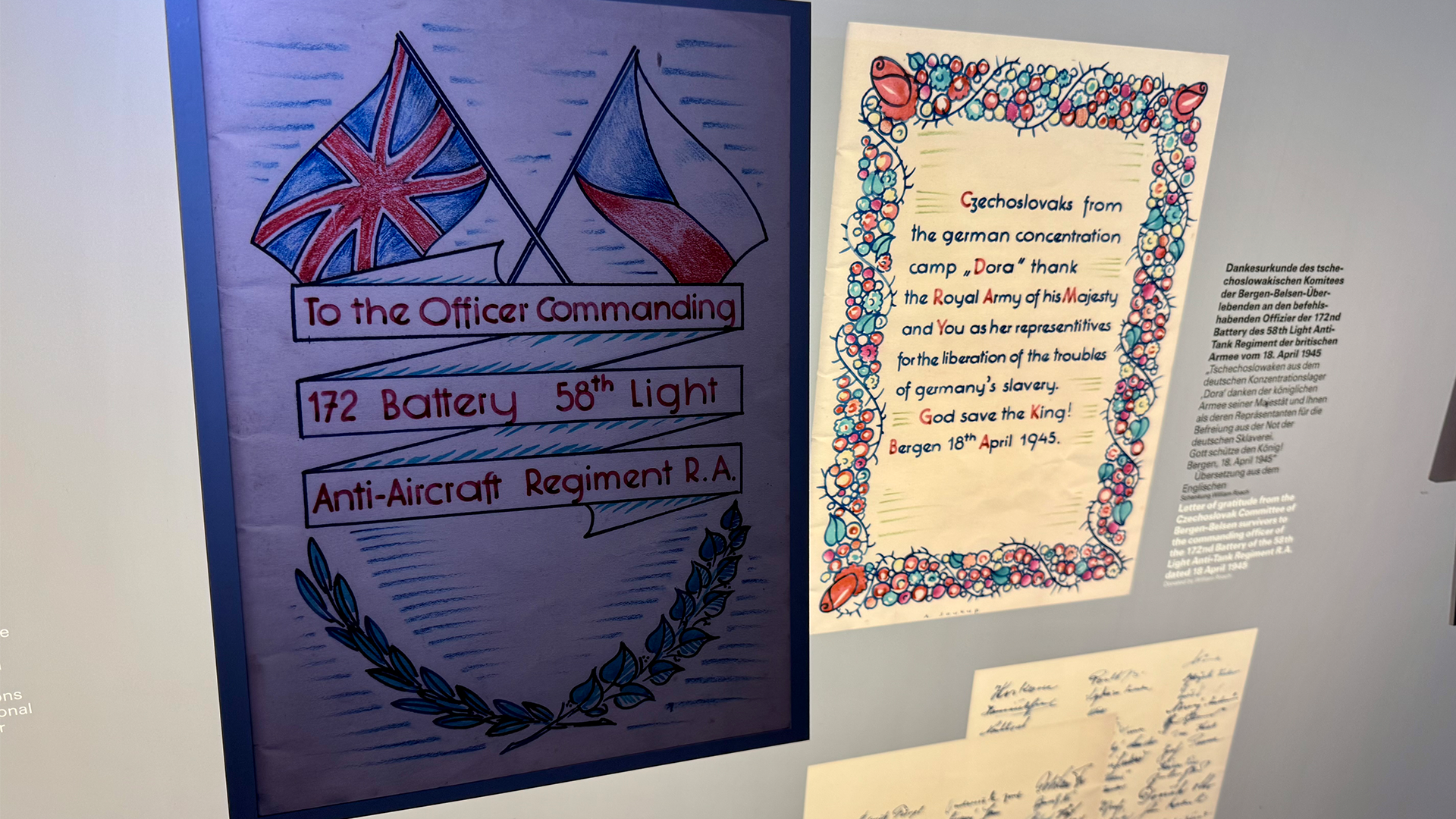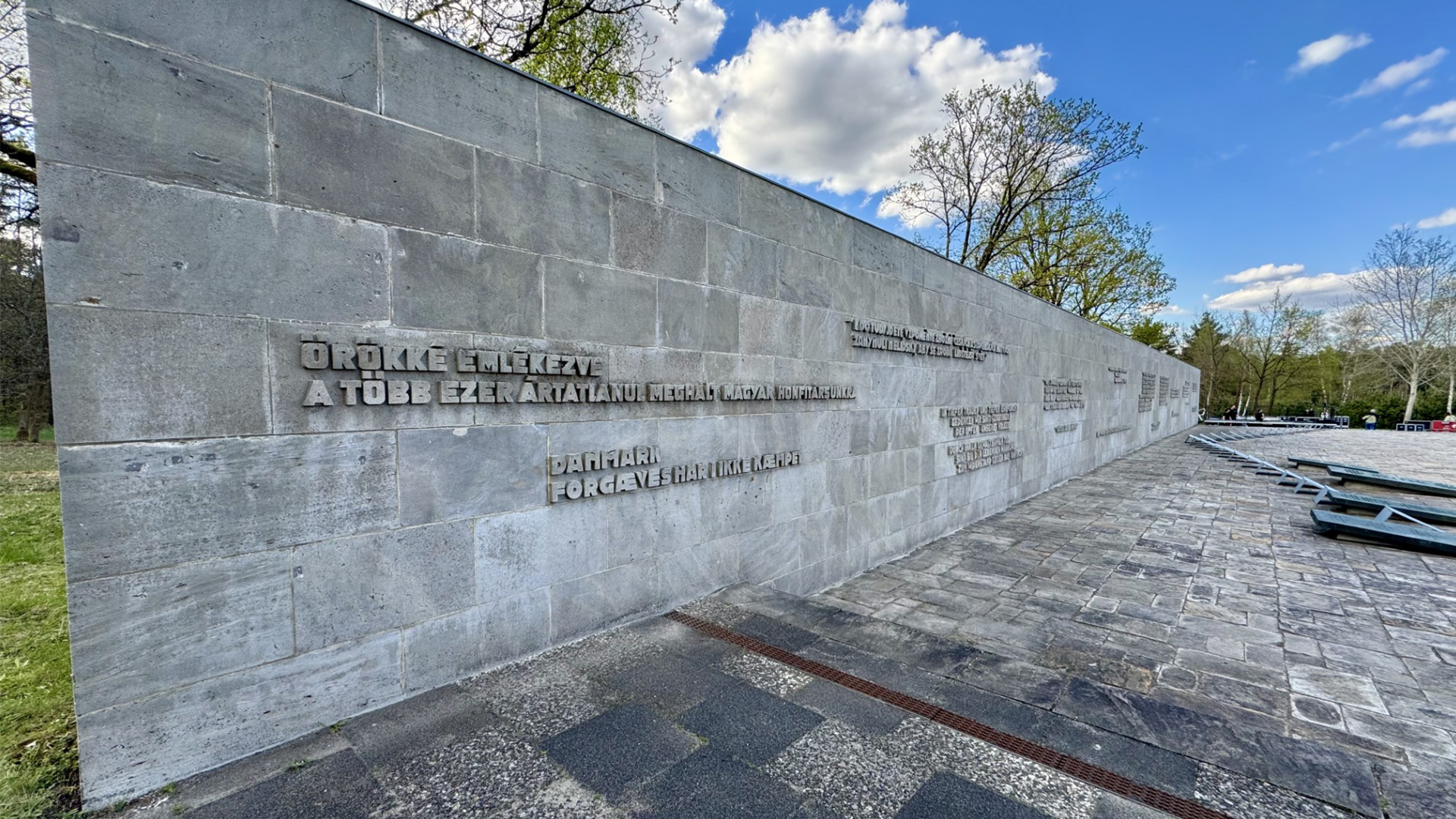How a pair of gloves and a British soldier saved a child's life at Bergen-Belsen
Eighty years after the liberation of Bergen-Belsen concentration camp by British forces, the story of an 11-year-old survivor continues to symbolise hope amid one of the darkest chapters of history.
Yvonne Palakova was just a child when she arrived alone at Bergen-Belsen from Slovakia in November 1944.
According to Petra Höxtermann, a guide at the Bergen-Belsen Memorial, the women in Yvonne's barrack largely ignored her and even took her food.
In desperation, Yvonne sought out the camp kitchens, where one female prisoner showed her small acts of kindness – providing scraps of food and, remarkably, knitting her a pair of gloves using threads from old blankets.
"She was very lucky to have this woman," said Ms Höxtermann. "One day, this prisoner even gave her the gloves, which was really remarkable at the time."
When British forces liberated the camp in April 1945, one of the first orders given to soldiers was to search for signs of life among the thousands of dead.
It was those handmade gloves that saved Yvonne's life.
"One of the soldiers found her because she was wearing the gloves and she was moving her hands," said Ms Höxtermann.

"He took the little girl and brought her to the emergency hospital, and she was saved."
Yvonne eventually returned to Slovakia and was reunited with her parents.
Seeing her again for the first time, they were shocked by how weak she was – unable to walk properly or even hold a pen.
Through daily swimming and rehabilitation, she regained her strength, finished school, and went on to study medicine.
In later life, at an international medical congress, she met and fell in love with a German man, becoming Mrs Koch. They married, and Yvonne moved to Germany.
For much of her life, however, Yvonne kept her experiences at Bergen-Belsen private, not even telling her husband.

It was only at the age of 60 that she wrote down her story – particularly the story of the gloves – and finally shared it with him.
Together, they decided that the gloves, carefully preserved for decades in tissue paper, would be donated to the Bergen-Belsen Memorial exhibition, where they remain today.
"They were always kept in a drawer. Very like a treasure, you could say," Ms Höxtermann said.
Yvonne lived into her late 80s, dying just two years ago.
Ms Höxtermann reflected that her life stands as proof that even after unimaginable trauma, happiness and hope can endure.
"It is proof that people can overcome obstacles as soon as they get to know each other," she said. "Which provides hope, I think."
Today, visitors to Bergen-Belsen can still see the gloves that once saved a child's life.









